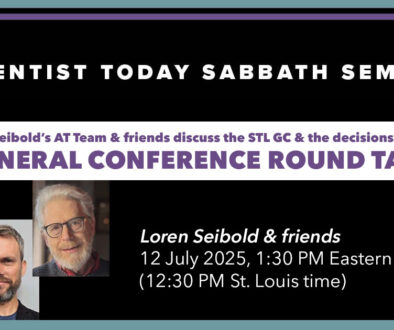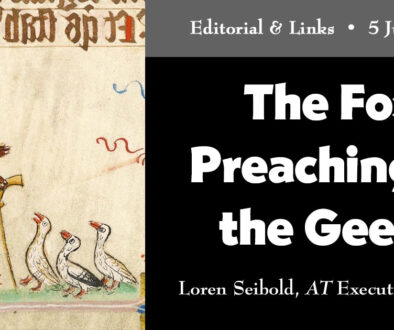An Echo of My Own Journey with Ellen White
George R. Knight, Ellen White’s Afterlife. Nampa, ID: Pacific Press Publishing Association, 2019.
Reviewed by Reinder Bruinsma
It is no secret to readers of this website that there continues to be considerable polarization in the Seventh-day Adventist Church regarding the person and ministry of Ellen G. White. As I preach and lecture in many different places, I meet church members who pay little attention to her, while I also encounter those who have put her on a pedestal. Just recently during a question-and-answer period in a church in Sweden I was criticized for some of the comments I had made about “Sister White” in my rebuttal of Last Generation Theology. When I asked the person, who took issue with me, whether he believed that Ellen White should be given the same status as the biblical prophets, he was adamant that this was indeed the case!
The differences of opinion regarding the inspiration of Ellen White and about the authority her writings continue to have for our beliefs and our daily lives are not new. I grew up as an Adventist in the Netherlands, where at the time the polarization with regard to our prophet was perhaps even more pronounced than it is today. For a relatively small group she was the center of their Adventist faith and practice. For a majority of church members her person was surrounded with many question marks. Most members owned some of her books that had been translated into Dutch, such as Steps to Christ and the Great Controversy, but how many of them had actually read those books was another matter. Those who always talked about Ellen White tended to be viewed as vegetarian non-coffee-drinking fanatics.
Just as in most other Adventist homes in the Netherlands in the 1950’s and 1960’s we had a shelf with some heavy tomes of classic Adventist literature: books by Ellen White, James White, Uriah Smith and Louis Conradi. But I cannot remember that they were ever taken off the shelf—by my parents or by me. I was baptized at age fourteen, and although one of the (public) baptismal questions was whether I believed in “the spirit of prophecy,” I had not read anything she had written, except quotations in the Sabbath School quarterly. When a few years later I enrolled in the theology course at the junior college which at the time was operated by the Netherlands Union, my teachers made very little use of Ellen White’s writings, as they sought to instruct the small group of theology students in the basics of biblical languages and theology.
However, when I continued studying at Newbold College in Great Britain, I entered a much more “White-friendly” environment. Several Ellen White books were required reading, for instance The Desire of Ages, Ministry of Healing, and Gospel Workers. (I recollect that we were discouraged from reading these books on Sabbath, as this reading was part of our “work” for the various classes!)
When leaving Newbold with my bachelor’s degree and moving on to Andrews University for my master’s, I had the privilege of taking a Spirit of Prophecy class that was taught by none other than Arthur White, the grandson of the prophet. What I remember best was his frequent imitation of the words Glory, glory, glory! which his grandmother used to exclaim when she passed into one of her visions.
Ellen White’s “Wonderful World”
My study time at Newbold and Andrews helped me to gain a broader view and a greater degree of appreciation of the person and writings of Ellen White, but there were always some reservations and questions in my mind about her role in my church. Therefore, I can probably least identify with the first section of Knight’s book about the “delightful fictions, troubling facts and enlightening research” (as reads the subtitle of the book) that relate to Ellen White. The first chapter in this book that chronicles the ways in which through the years Ellen White’s inspiration has been perceived deals with “the wonderful world of Ellen White in the 1960’s.” Knight describes how Ellen White herself, as well as the early Adventist leaders, held quite moderate views about her inspiration. They did not claim any form of verbal inspiration and did not hold that she was always historically accurate. Moreover, they did not hide the fact that she did frequently use the thoughts and the words of other authors.
However, in the era of growing fundamentalism around the 1920’s there was a clear shift in Adventist thinking (though never officially endorsed) towards verbal inspiration of the Scriptures and of the writings of Mrs. White. When a Bible Conference was held in 1919 the earlier, more moderate, views about inspiration still prevailed, but soon this approach was considered somewhat of an embarrassment. The minutes of the conference disappeared and remained unknown until they were discovered in the church’s archives in 1974 and published by Spectrum magazine in 1979.
Troubling Facts
Knight’s moves from a description of the era in which Ellen White was put on a high pedestal by many (“the wonderful world”) to the end of this era, when “troubling facts” were unearthed by Donald McAdams, Ronald Numbers and Walter Rea.
At the time I followed these developments, which Knight nicely summarizes, very keenly. But that Ellen White was not as original as many claimed did not shock me as dramatically as it did many others, perhaps because I had never bought into this “high” view of her inspiration that had become quite dominant in the church. I mainly wondered how the denomination was going to deal with these discoveries.
The chapter about the “Development of a More Adequate Understanding” echoes very closely the progress in my own thinking about Mrs. White. Many of the books that Knight refers to are in my library, most of them heavily underlined. I have much appreciated the popular books by George Knight himself on this topic, and I played a role in having some of these published in the Dutch language. I found Theodore N. Levterov’s little book Accepting Ellen White (Pacific Press, 2016) quite enlightening. It was a happy surprise to see the director of the Ellen G. White Branch Office at Loma Linda provide such a balanced account of how Ellen White’s contemporaries dealt with the “Gift of Prophecy Dilemma” (words in the subtitle of his book). Gilbert Valentine’s two books about this topic were also eye-openers for me. His The Prophet and the Presidents (Pacific Press, 2011) gave a meticulously documented picture of Ellen White’s relationship with three top church administrators. It showed me a side of her that I had not seen before, namely, as rather political and even manipulative.
Valentine’s other book, The Struggle for the Prophetic Heritage (first published in Thailand in 2007 and recently republished by Oak and Acorn), confirmed some suspicions that I had since I worked on my PhD dissertation in the late 1980’s and spent a few weeks in the General Conference archives. I went through the minutes of the Review and Herald Publishing House Board for the first half of the twentieth century and found to my utter astonishment that there had been questions who should pay for Mrs. White’s funeral. The board decided that the publishing house would pay one-third of the funeral expenses. I remember how strange it appeared to me that at her death Mrs. White did not leave enough money to pay for her own funeral. Valentine gives a full account of the problems surrounding her debts and the controversy between the church and the White family.
More recently, my thinking about Ellen White once again had to be somewhat adjusted, after reading some of the chapters in Ellen Harmon White: American Prophet (edited by Terrie Dopp Aamodt, Gary Land and Ronald Numbers; Oxford University Press, 2014), and the comments of Denis Fortin in the 125th-anniversary edition of Steps to Christ (Andrews University Press, 2017). Until then I had been under the impression that this little book was probably her most original work. I knew of her borrowings for The Great Controversy and The Desire of Ages and some of her other books, but was unaware of the genesis of Steps to Christ. My overriding feeling was, however, not one of disappointment, but rather of relief that it was now possible to have such a book published by an Adventist publisher.
A Way Forward?
In his final chapter George Knight points to possible ways forward in Ellen White studies. I wonder whether he is perhaps a bit too optimistic about the future. On the one hand, we see indeed that some recent publications are refreshingly candid about many of the “troubling facts” that have been revealed and may hope that these books—including this one by Knight—may help many in the church to have “a more adequate understanding” of who Ellen White was and about her role as one of the pioneers of our church. However, on the other hand, we continue to see (also on the highest administrative levels) how Ellen White’s writings are still treated as being (almost?) at the same level as Scripture.
Hopefully, Ellen White’s Afterlife can help many Seventh-day Adventists to gain a better understanding of Ellen White’s role in Adventism. George Knight provides a very readable and informative historical overview of the reception of Ellen White’s writings and, in the second part of the book, makes a number of documents available that have a major historical significance in this connection. I was aware of these documents, but had actually never read the full statement of W.C. White—the son of Ellen White, who served for some decades as her most trusted co-worker—about the 1911 edition of the Great Controversy and his letters to W.W. Eastman and L.E. Froom, respectively. These documents, in themselves, should help the readers in 2019 to come to a realistic appraisal of the role of Mrs. White.
The problems with books such as Ellen White’s Afterlife are that they are mostly read by people who, like me, have traversed much the route that George Knight describes, and that they will not reach those who need this clarification most.
 Reinder Bruinsma lives in the Netherlands with his wife Aafje. He has served the Adventist Church in various assignments in publishing, education and church administration on three continents, his last post before retiring as president of the Netherlands Union. He still maintains a busy schedule of preaching, teaching and writing. His latest books are Facing Doubt: A Book for Adventist Believers “on the Margins” and In All Humility: Saying “No” to Last Generation Theology.
Reinder Bruinsma lives in the Netherlands with his wife Aafje. He has served the Adventist Church in various assignments in publishing, education and church administration on three continents, his last post before retiring as president of the Netherlands Union. He still maintains a busy schedule of preaching, teaching and writing. His latest books are Facing Doubt: A Book for Adventist Believers “on the Margins” and In All Humility: Saying “No” to Last Generation Theology.




